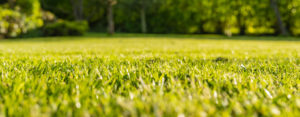When to Apply Lime to Your Lawn
Last updated: 12/8/2022
Estimated read time: 3 minutes
What Does It Mean to Lime Your Yard?
When homeowners speak of “liming” their yard, they are referring to the process of adding ground limestone to their turf, which contains calcium carbonate and magnesium carbonate. Adding these minerals increases the soil’s pH level, which can improve the availability of nutrients to plants.

How Do I Know If My Lawn Needs Lime?
To determine if your lawn needs a lime application, you should use a pH level test—you can use a home testing kit or have your soil tested by a professional. If the test indicates that the pH level is less than 6.0, an application may be necessary.
Why Should I Lime My Lawn?
The purpose of putting lime on your lawn is to slowly decrease the soil’s acidity and bring the pH to the desirable area of 6.0-7.0. While the ideal pH level depends on your type of grass, any pH below 5.0 is generally too acidic for grasses to grow and thrive.
Why Does the pH of my Soil Change?
It is normal for the pH of your lawn to continuously dip, as it is directly impacted by its environment. For example:
- Soils in heavily wooded areas nearly always have a high acid characteristic.
- As organic materials and minerals break down, such as nitrogen- or compost-based fertilizers, they make the soil acidic.
- Additionally, heavy rainfall can wash calcium out of the soil, causing the pH to drop—a process known as leaching.
When Should I Put Lime on My Lawn?
The winter or very early spring is the best possible time to apply lime to your lawn—lime can burn growing grass, so you’ll want to make sure you apply it after the growing season has ended but before the new growth of spring.
In areas where winters are extremely cold, lime treatments should be applied during the first frost. This is because the thaw/freeze cycle assists lime in penetrating the soil.
Can I Apply Lime and Fertilizer at the Same Time?
Since fertilizers need to be in the 6.2-7.0 pH range to be the most effective, we recommend waiting to fertilize until after a lime application shifts the acidity back into the desired range.
Tips for Liming, Aeration, and Seeding
Lime works well with aeration and seeding—combining liming and aeration can give you a head start in the spring, creating a perfect environment for new seeds. Here are some things that can help you get started:
- Use this rule of thumb—lime should be applied at a rate of 40 pounds per 1000 square feet.
- Apply lime to your yard at the same time you are sowing new seeds.
- Make sure to seed at the recommended rate and to keep the grass seed moist and water daily to keep the grass seed from drying out.
- We recommend double aerate at cross angles, pulling plugs that are around 3″-4″ in length.
- Afterward, leave the plugs alone so they will break apart, and do not collect the lawn clippings.
- Avoid using spiked shoes for aeration. The spike will compact the soil even further.
Have a Question About Lawn Care? Ask the Experts!
Having a lawn care problem that you can’t seem to solve? Send your question to our expert technicians and get the answers you need to get a healthy, beautiful lawn.
Ask a Lawn Care QuestionGet Help from the Professionals
When it comes to applying lime on your lawn—or any other lawn care task—it can be a little overwhelming, especially for new homeowners. So let the experienced professionals help! Our team of local experts can add lime to your lawn this upcoming winter and prepare it for optimal growth in the next growing season. Learn more about our different lawn care treatment options.
Get a FREE Lawn Care Quote Now
Quick Quote Form
"*" indicates required fields
